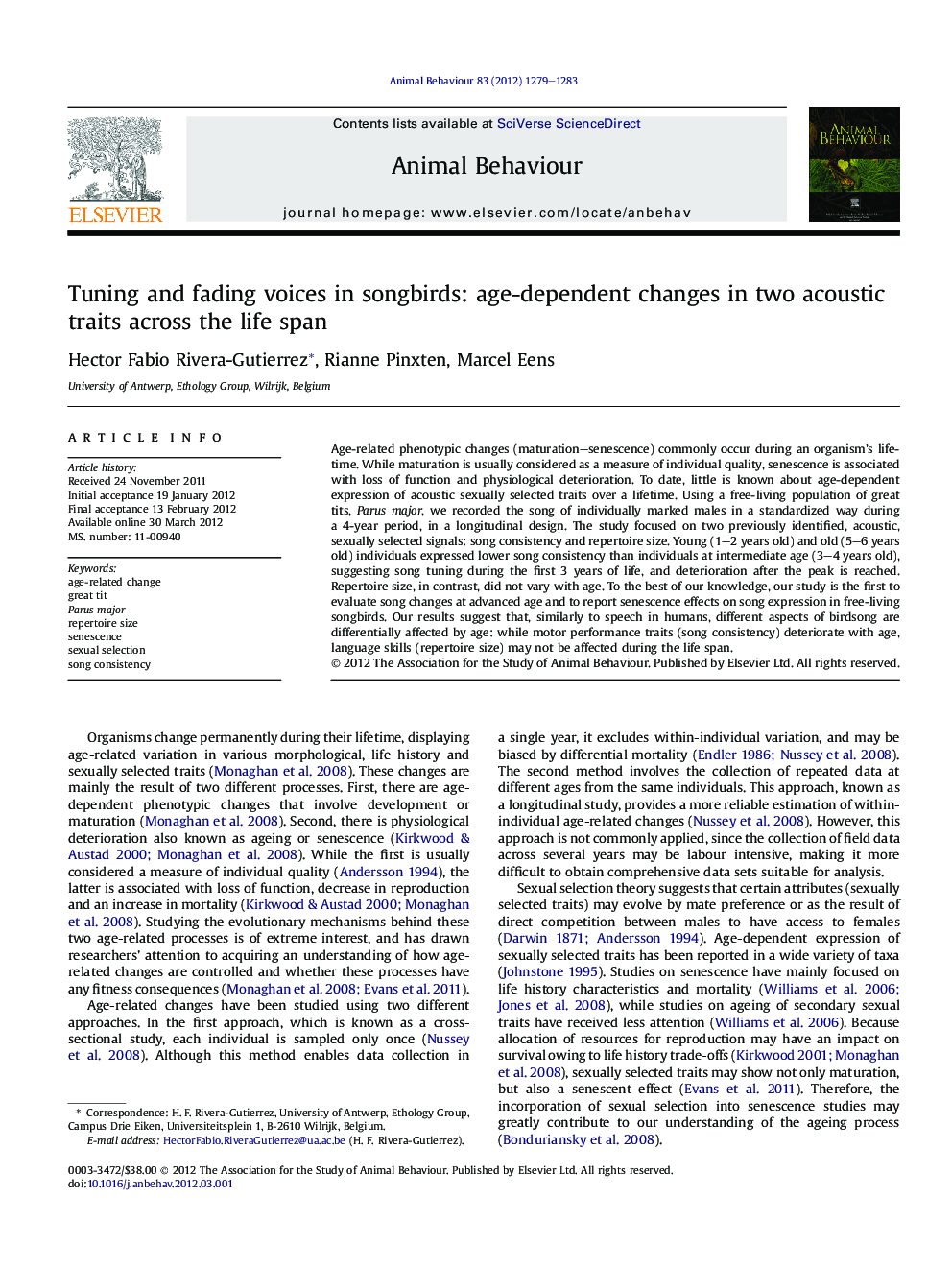| Article ID | Journal | Published Year | Pages | File Type |
|---|---|---|---|---|
| 2416905 | Animal Behaviour | 2012 | 5 Pages |
Age-related phenotypic changes (maturation–senescence) commonly occur during an organism’s lifetime. While maturation is usually considered as a measure of individual quality, senescence is associated with loss of function and physiological deterioration. To date, little is known about age-dependent expression of acoustic sexually selected traits over a lifetime. Using a free-living population of great tits, Parus major, we recorded the song of individually marked males in a standardized way during a 4-year period, in a longitudinal design. The study focused on two previously identified, acoustic, sexually selected signals: song consistency and repertoire size. Young (1–2 years old) and old (5–6 years old) individuals expressed lower song consistency than individuals at intermediate age (3–4 years old), suggesting song tuning during the first 3 years of life, and deterioration after the peak is reached. Repertoire size, in contrast, did not vary with age. To the best of our knowledge, our study is the first to evaluate song changes at advanced age and to report senescence effects on song expression in free-living songbirds. Our results suggest that, similarly to speech in humans, different aspects of birdsong are differentially affected by age: while motor performance traits (song consistency) deteriorate with age, language skills (repertoire size) may not be affected during the life span.
► We studied age-related changes of song across the life span in free-living birds. ► Song consistency varied significantly with age, describing a quadratic pattern. ► After 3 years of age song consistency decreased, denoting senescence. ► Repertoire size remained constant and did not vary with age. ► Our study quantifies for the first time senescence in birdsong in free-living birds.
